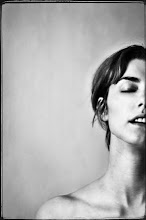I can not say enough GREAT THINGS about this book or recommend it to enough artists! The Artist's Guide: How To Make A Living Doing What You Love has been a big eye opener and helpful guide for what it takes to be a professional artists. Jackie Battenfield freely shares the knowledge she has gained as a professional artist for the last 20+ years for beginning or re-beginning artists to reference as they embark on their own journey. Battenfield takes a very practical and realistic approach to what it means to be an artist. She gives a thoroughly overview of a lot of the responsibilities, problems and needs an artist will face and how to deal with them.
I know for me as a student, there are many unsure areas of what needs to be done to make money in the art world. Battenfield has been very helpful in paving a more clear picture for me of what it will take. I am not saying this book gives every answer I'll ever need to know or is the only resource I would ever need, but it helps bring light to a lot of what was once unknown. It makes it clearer how and where to start a career as an artist.
In her book, Battenfield covers a lot of essential skills an artist should develop, like setting goals, how to write an artists statement, a resume,a bio and how to make work samples, and she gives advice on organizational skills. She discusses grants, residencies, copy right laws, taxes and building a network of artists and other art professionals to draw upon for help. She offers guidelines for exhibiting your work and gives resources for finding galleries that are a right match. She also outlines who the key players are in the art world and what role they play. (Most of this information I had little knowledge of beforehand so I received it all gladly)!
At the end each chapter, Battenfield gives a list of resources (with a brief description of what information that resource contains) that gives direction of where to look next for more information covered in the chapter. I found her brief descriptions to be very helpful in choosing what other resources I would be interested looking in to.
To sum up my overall feelings about the book, I was actually sad when I finished it. Battenfield began to feel like real, helping friend to me. I felt like I knew her and her career intimately. Her writing approach was often personal, she gave great antidotes and I could relate to what she was saying. I even felt at times as though as I was having a conversation with her. It was a very easy and enjoyable read. This is a book I plan on re-reading over and over again throughout my career and I see myself reference it often for advice about the many responsibilities I will face as a professional artist.










